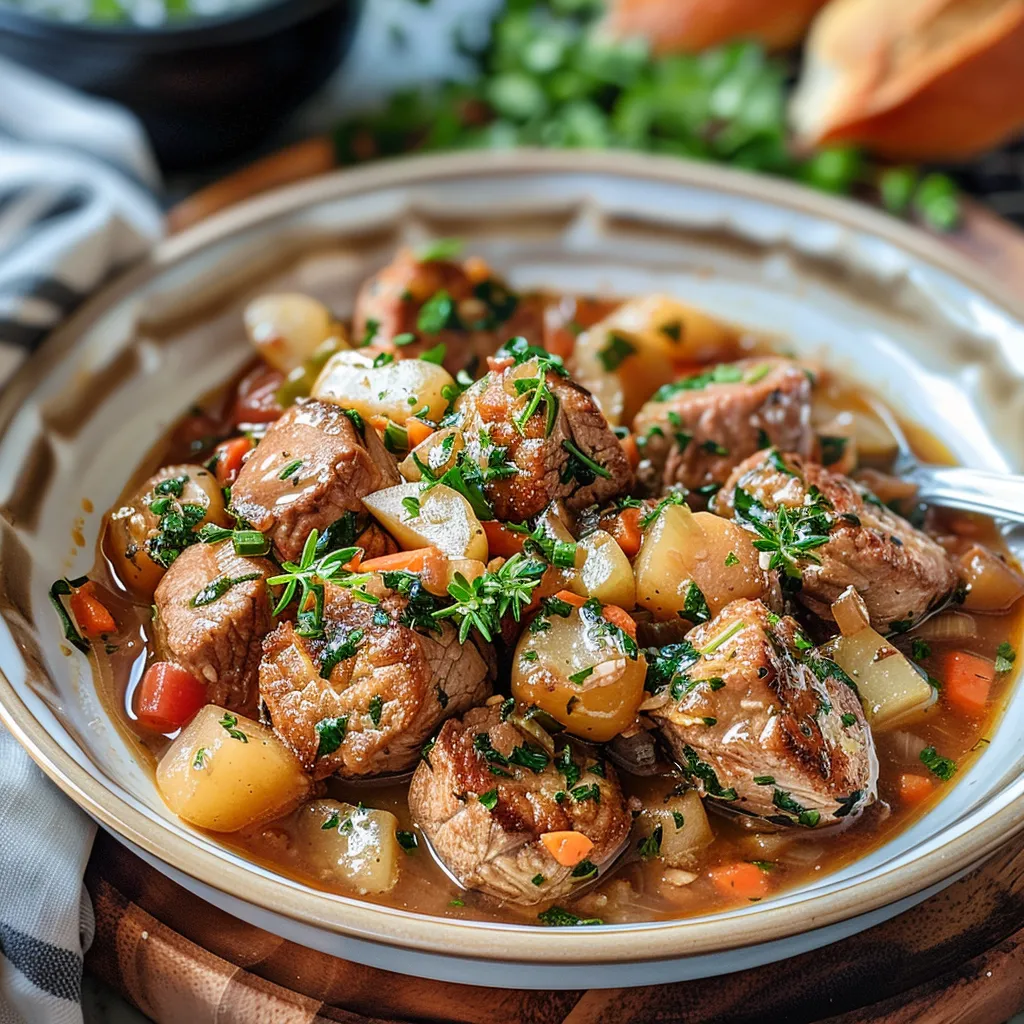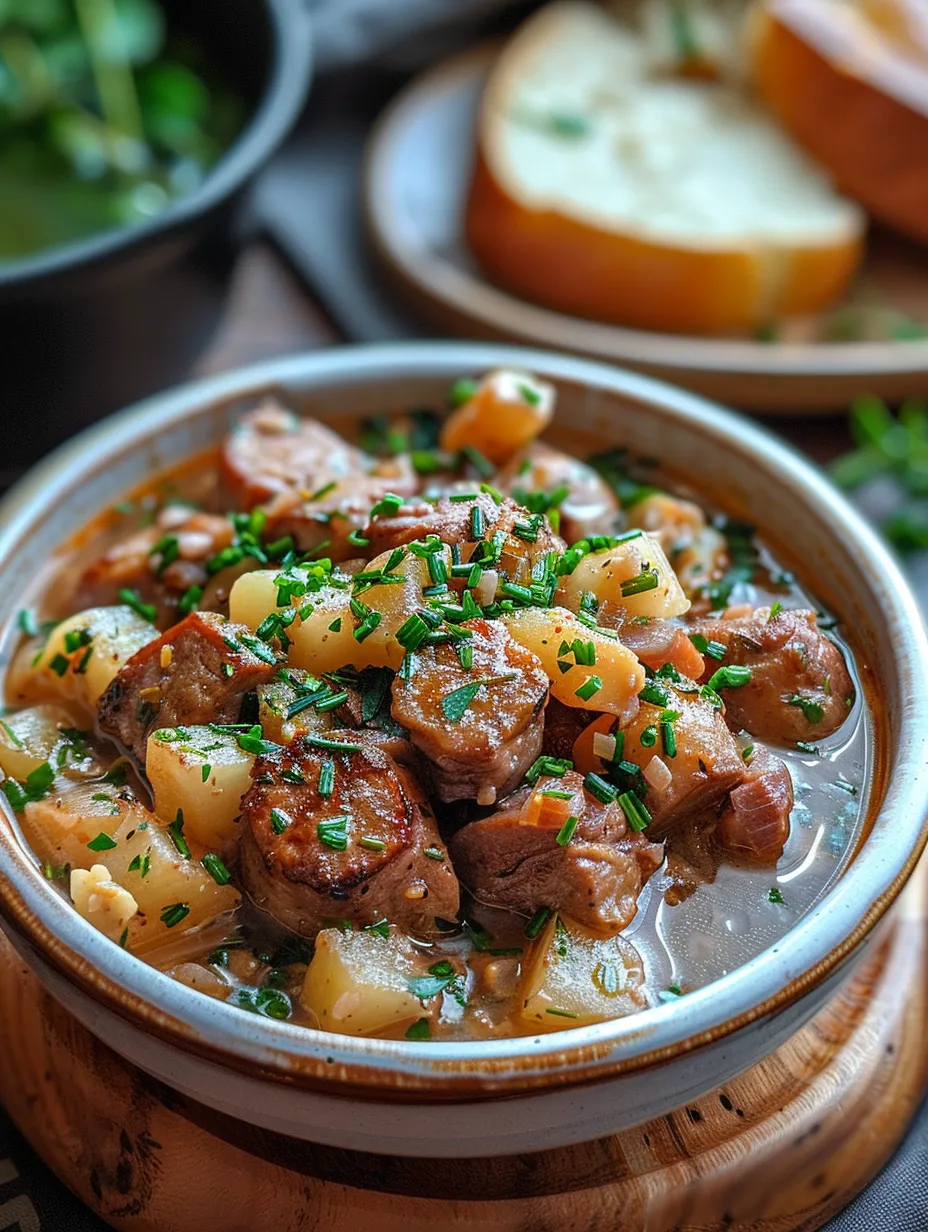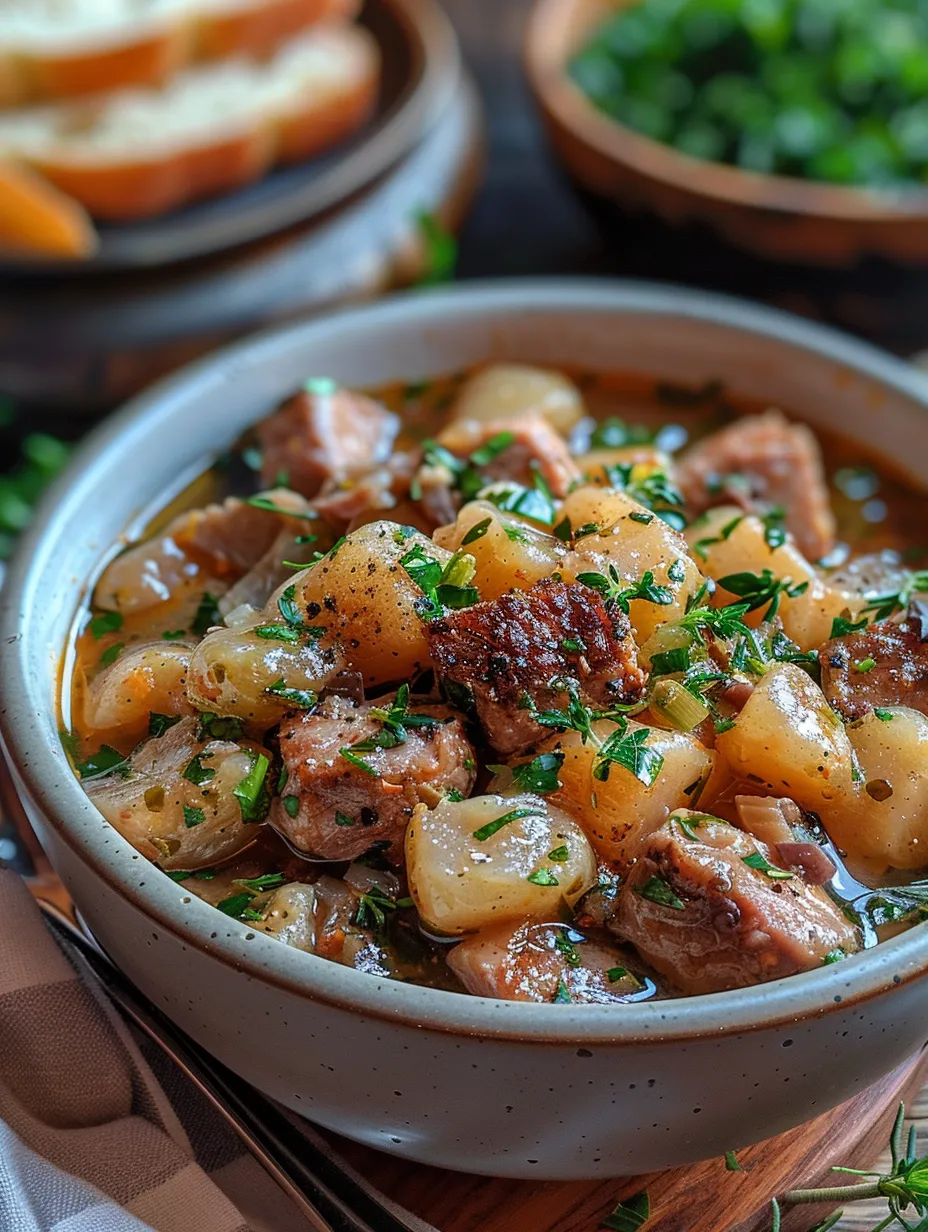 Pin it
Pin it
Transport yourself to the heart of Dublin with this authentic coddle that combines smoky bacon, hearty sausages, and tender potatoes in a rich, savory broth. This traditional Irish comfort food embodies simplicity and substance, creating a meal that's both satisfying and steeped in cultural heritage.
After experimenting with numerous Irish dishes, I discovered that Dublin Coddle represents the epitome of Irish comfort cooking—unpretentious ingredients transformed through careful technique. The moment you lift the lid to reveal the beautifully browned potatoes and inhale the aromatic steam, you'll understand why this dish has been cherished for generations.
Essential Components
Bacon Selection: Thick-cut bacon or Irish rashers provide the perfect smoky foundation. Sausage Quality: Traditional Irish bangers or substituted bratwurst bring essential meaty richness. Potato Preparation: Uniform cutting ensures even cooking. Layering Strategy: Proper order creates ideal flavor infusion. Broth Addition: Beef broth provides depth that water simply cannot match.
 Pin it
Pin it
Creating Your Masterpiece
- Perfect The Foundation:
- Cook bacon until crisp and render sausages until browned, creating essential flavors that infuse the entire dish.
- Master The Deglazing:
- Capture all the concentrated flavor from the bottom of the pot by properly deglazing with broth.
- Build The Layers:
- Arrange ingredients in the prescribed order, allowing flavors to mingle while maintaining distinct textures.
- Create The Environment:
- Seal the pot properly to create the ideal steaming environment for tenderizing potatoes and onions.
- Complete The Browning:
- Remove the cover for the final cooking stage to develop beautiful color and concentrated flavor.
This coddle has become my go-to recipe for showcasing authentic Irish cooking beyond the typical corned beef and cabbage. Its unpretentious nature combined with deeply satisfying flavors makes it perfect for both special occasions and everyday comfort.
Perfect Pairings
Complete your Irish feast with thoughtful accompaniments. Serve with traditional Irish soda bread or brown bread for sopping up the flavorful broth. Add a simple side salad with vinaigrette for freshness and contrast. For an authentic experience, pair with a pint of Guinness or Irish cider. During colder months, start with a cup of potato leek soup for a complete Irish meal.
Creative Variations
Adapt this versatile recipe to create your own tradition. Try adding carrots or parsnips for additional vegetables. Create a more herbaceous version with thyme and bay leaves. Make a lighter variation using chicken sausage and chicken broth. For a one-pot meal, add cabbage during the last 30 minutes of cooking.
 Pin it
Pin it
Storage Success
This dish improves with time as flavors continue to develop. Store leftovers in an airtight container in the refrigerator for up to four days. Reheat gently on the stovetop, adding a splash of broth if needed to maintain moisture. For make-ahead convenience, prepare the entire dish a day in advance, then reheat before serving.
Through countless Irish recipe preparations, I've found that respecting traditional techniques while using the best quality ingredients creates the most successful results. This recipe proves that humble ingredients—when treated with care and patience—can create a deeply satisfying meal that connects us to culinary heritage while providing genuine comfort.
Frequently Asked Questions
- → What are Irish bangers and where can I find them?
- Irish bangers are pork sausages that tend to be thicker than American breakfast sausages and often contain breadcrumbs and various seasonings. They get their name from their tendency to burst or "bang" if cooked at too high a temperature. You can find them at specialty butchers, Irish markets, or well-stocked grocery stores, especially around St. Patrick's Day. If unavailable, bratwurst or any high-quality pork sausage makes a good substitute.
- → Can I make Dublin Coddle in a slow cooker?
- Yes, Dublin Coddle adapts well to a slow cooker. Brown the bacon and sausage as directed, then transfer to the slow cooker along with the remaining ingredients, layered as in the original recipe. Cook on low for 6-8 hours or on high for 3-4 hours. The slow cooker version will have more liquid and less browning, but all the same delicious flavors.
- → What type of potatoes work best for this recipe?
- Waxy potatoes like Yukon Gold or red potatoes work best as they hold their shape during the long cooking process. Russet potatoes can be used but will break down more, creating a thicker stew. Either way is authentic - some Irish families prefer a more broth-like coddle, while others enjoy when the potatoes break down slightly to thicken the stew.
- → Is there a vegetarian version of Dublin Coddle?
- While traditional Dublin Coddle is meat-centric, you can create a vegetarian version using plant-based sausages and bacon substitutes, vegetable broth, and perhaps adding root vegetables like carrots and parsnips for additional flavor. The cooking process remains the same, though you may need less time since you're not cooking meat.
- → How do I store and reheat leftovers?
- Dublin Coddle actually improves with time as the flavors continue to meld. Store leftovers in an airtight container in the refrigerator for up to 3 days. Reheat gently in a covered pot on the stovetop over medium-low heat until warmed through, or in the microwave at 70% power, stirring occasionally. Add a splash of broth if needed to loosen the stew.
